Monitoring and evaluation provide an insight into the success of the program/project by providing the proof that the initiative is progressing as planned and achieving the desired outcomes. Effectively designed and implemented monitoring and evaluation identifies risks, allows time for calculated adjustments if required, and creates a culture of continual improvement for the participant, delivery organisation and investor.
There are three principle elements in monitoring and evaluating all investment:
- Has the project been effective and efficient in expenditure of funds and have on-ground works been completed as prescribed?
- Have there been practice and management changes adopted by the land manager (in both managing agriculture and managing the environment)?
- Has there been a quantifiable outcome achieved on water quality and/or the environment?
Agriculture
As a minimum, it is recommended that the following process be adopted and information collected for each on-ground project:
- Establish photo monitoring point and take pre-works site photos.
- Stocktake land condition assessments.
- Underage pre-works management practice.
- Prepare a GIS shape file of project area identifying proposed infrastructure.
- Complete training through the project and extension support provided.
- Take post-works site photos (at previously established photo monitoring point).
- Implement post-works management practices.
Depending on the project type or duration, some mid-project monitoring may also be required. This data can then be modelled and the estimated sediment saving calculated. This can then be compared against the costs of works to determine the overall value for money when compared against similar works.
Follow up surveys are a useful way of determining the level of practice and management changes that have been adopted, and will be utilised in relevant programs.
The Queensland Government’s Paddock to Reef program monitors the effectiveness of the Australian and Queensland government Reef investments in the grazing and grains industries in the Fitzroy Region. This information will be used by WQIP:2015 to track annual progress against targets on a yearly basis.
Environment
The monitoring program for environment projects will be determined according to the individual project’s projected outcomes. Types of monitoring activities include:
- Set up photo monitoring point and take pre-works site photos. Undertake pre-works management practice.
- Assess level of success of weed control (e.g. kill rate for weed control projects).
- Assess level of success of feral animal control (for feral animal control projects).
- Assess plant survival rate (for tree plantings).
- Assess behaviour change in the community (for community education projects).
- Assess level of community involvement (for community projects in general).
- Undertake flora and/or fauna surveys.
- Prepare a GIS shape file of project area identifying proposed works area.
- Take post-works site photos at photo monitoring point.
- Implement post-works management practices.
Depending on the project type or duration, some mid-project monitoring may also be required. This provides a good opportunity to assess the progress and outcomes of the project to-date, and implement any adaptive management actions that may be required.
Reef Plan monitors the effectiveness of the Australian and Queensland government Reef investments in the Fitzroy Region. This information will be used by WQIP:2015 to track annual progress against targets on a yearly basis.

